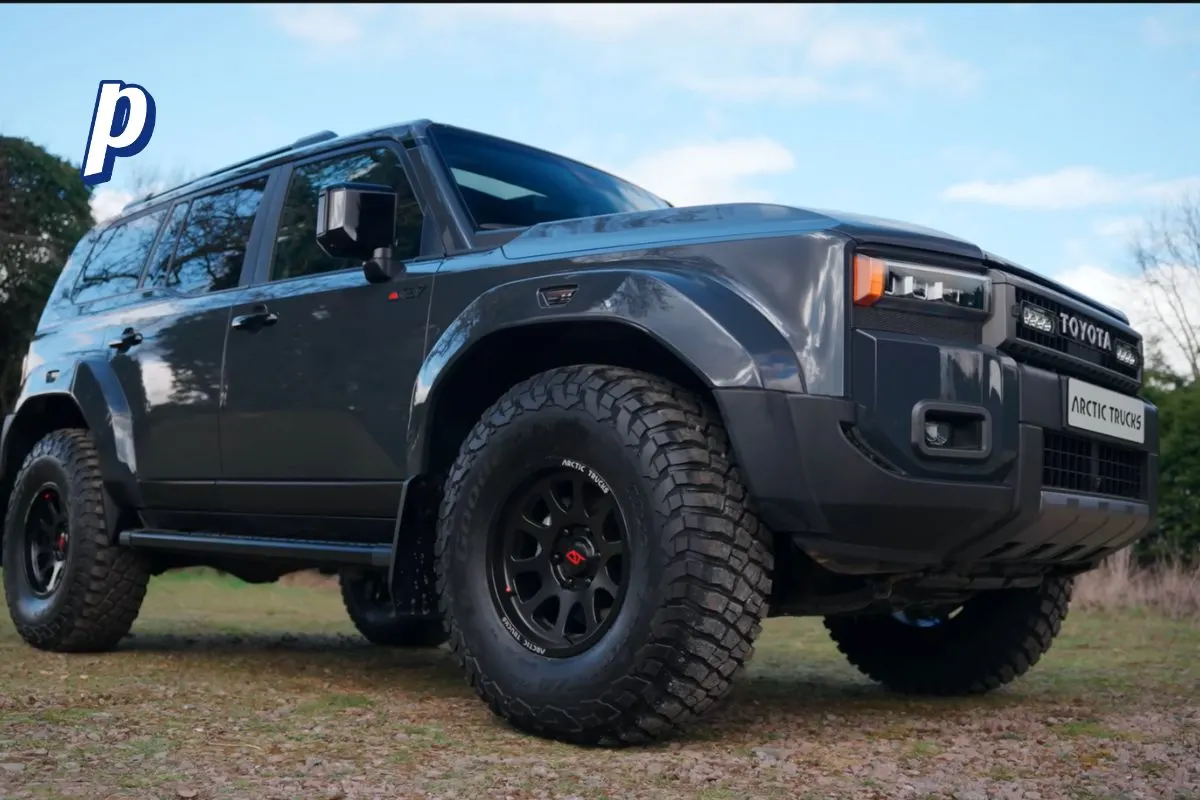Discover expert tips to maximize your 4×4’s fuel efficiency. Learn how driving habits, maintenance, tire choices, and aftermarket upgrades can improve gas mileage and reduce fuel consumption.

4×4 vehicles are loved for their ruggedness, off-road capabilities, and powerful engines. However, they are also known for their relatively lower fuel efficiency compared to sedans or smaller cars. Rising fuel costs and environmental concerns make improving your 4×4’s fuel economy more important than ever. Fortunately, with the right driving habits, vehicle maintenance, and modifications, you can significantly improve your 4×4’s fuel efficiency without sacrificing performance.
In this comprehensive guide, we will cover expert tips to help you get the best fuel efficiency from your 4×4, diving into topics such as driving habits, maintenance tips, tire choices, and aftermarket modifications.
Table of Contents
1. Driving Habits: How You Drive Affects Your MPG
One of the easiest ways to improve your 4×4’s fuel efficiency is by adjusting your driving habits. The way you accelerate, brake, and cruise can have a significant impact on how much fuel your vehicle consumes.
Avoid Aggressive Driving
Aggressive driving, such as rapid acceleration, hard braking, and speeding, can dramatically lower your fuel efficiency. Studies show that aggressive driving can reduce your gas mileage by up to 30% on the highway and 40% in stop-and-go traffic. Instead, practice smooth acceleration and deceleration. Gradual inputs to the throttle and brake allow the engine to work more efficiently and prevent wasting fuel.
Use Cruise Control on the Highway
Using cruise control on long highway stretches can help maintain a steady speed, which is key to optimizing fuel efficiency. When you manually adjust the throttle, even minor changes in speed can increase fuel consumption. Cruise control helps eliminate these variations, allowing the engine to operate more efficiently at a constant speed.
Reduce Idle Time
Many drivers are unaware of how much fuel is wasted while idling. Idling consumes fuel without moving your vehicle, which is the opposite of fuel-efficient driving. If you’re going to be stopped for more than a minute, it’s more fuel-efficient to turn off the engine and restart it when you’re ready to move. Modern engines are designed to handle frequent starts and stops without significant wear.
Avoid High Speeds
While 4x4s are built for power, driving at high speeds can significantly decrease fuel efficiency. As speed increases, aerodynamic drag also increases, forcing the engine to work harder and consume more fuel. Most vehicles achieve their best fuel economy at speeds between 50 and 60 mph. Driving above 70 mph can cause fuel consumption to rise sharply.
Anticipate Traffic Conditions
Driving in heavy traffic not only wastes time but also fuel. Try to anticipate traffic lights and road conditions ahead to avoid unnecessary stops. Keeping a safe distance from other vehicles and coasting when possible can help reduce fuel consumption by minimizing sudden braking and acceleration.
2. Vehicle Maintenance: Keeping Your 4×4 in Top Condition
Proper maintenance is key to improving fuel efficiency in any vehicle, especially a 4×4, which tends to be heavier and more complex. Regular upkeep ensures that your engine runs efficiently and reduces the amount of fuel wasted due to mechanical issues.

Regular Oil Changes
Oil lubricates the engine and reduces friction between moving parts. Over time, oil can break down and become less effective, increasing friction and causing the engine to work harder. Regular oil changes with the correct grade of oil recommended by the manufacturer can improve engine efficiency and fuel economy.
Keep Your Engine Tuned
An engine in poor condition will consume more fuel. Regular engine tune-ups can improve fuel efficiency by fixing any issues that may be affecting engine performance. A well-tuned engine ensures that fuel is being burned efficiently, resulting in better gas mileage.
Change Air Filters
Air filters prevent debris and contaminants from entering the engine. A clogged or dirty air filter can reduce airflow, causing the engine to work harder and burn more fuel. Replacing a dirty air filter can improve fuel efficiency by up to 10%.
Maintain Proper Tire Pressure
Under-inflated tires can increase rolling resistance, causing the engine to work harder and consume more fuel. Check your tire pressure regularly and keep it at the manufacturer’s recommended level. Properly inflated tires can improve fuel efficiency by up to 3%. Additionally, consider using low rolling resistance tires, which are designed to reduce friction with the road and improve fuel economy.
Check and Replace Spark Plugs
Faulty or worn-out spark plugs can lead to incomplete combustion, wasting fuel and reducing engine efficiency. Replacing old spark plugs ensures that the fuel-air mixture in the engine ignites properly, improving fuel economy.
3. Tire Choices: The Impact of Tires on Fuel Economy
The type of tires you use on your 4×4 can have a significant impact on fuel efficiency. Off-road tires, while excellent for traction on rough terrain, are generally not designed for fuel efficiency. If you do a lot of on-road driving, selecting the right tires can make a big difference.
Use All-Terrain or Highway Tires for Daily Driving
Off-road tires have larger treads and are made of softer rubber to grip uneven surfaces, which increases rolling resistance and decreases fuel efficiency. If you drive mostly on paved roads, consider switching to all-terrain or highway tires. These tires have less rolling resistance and can improve fuel efficiency without compromising too much on off-road capability.
Choose Low Rolling Resistance Tires
Low rolling resistance tires are designed to reduce the energy lost as the tire rolls. They have optimized tread patterns and are made from special rubber compounds that minimize friction with the road. These tires can improve fuel efficiency by up to 5%, especially during long-distance driving.
Rotate Tires Regularly
Uneven tire wear can increase rolling resistance, reducing fuel efficiency. Regular tire rotation ensures that your tires wear evenly, improving performance and extending their lifespan. Tire rotation is typically recommended every 6,000 to 8,000 miles.
Alignment and Balancing
Misaligned or unbalanced tires can increase drag and reduce fuel efficiency. If you notice your vehicle pulling to one side or vibrating at higher speeds, it’s time to have your tires aligned and balanced. Proper alignment reduces resistance and ensures that your vehicle moves more smoothly, consuming less fuel.
4. Aftermarket Modifications: Fuel-Saving Upgrades for Your 4×4
While 4x4s are known for their off-road prowess, there are several aftermarket modifications you can install to improve fuel efficiency without sacrificing performance.
Install a Cold Air Intake
A cold air intake system increases the amount of cool, oxygen-rich air that enters the engine, allowing for better combustion and more efficient fuel use. This modification can improve both horsepower and fuel efficiency by helping the engine breathe more easily.
Upgrade to a High-Flow Exhaust System
A high-flow exhaust system reduces back pressure in the exhaust system, allowing the engine to expel exhaust gases more efficiently. This can lead to a slight increase in fuel efficiency and horsepower. Performance exhaust systems are a popular upgrade among 4×4 enthusiasts looking to improve both power and fuel economy.
Consider a Tuner or Programmer
A tuner or programmer is a device that allows you to adjust your vehicle’s engine control unit (ECU) settings to optimize fuel efficiency. By recalibrating the ECU, you can improve the air-to-fuel ratio, ignition timing, and throttle response, all of which can lead to better gas mileage.
Use Synthetic Fluids
Switching to synthetic oils and lubricants can improve fuel efficiency by reducing friction and heat in the engine and drivetrain. Synthetic fluids are designed to perform better under extreme conditions, which is especially important for 4x4s that are often used in tough off-road environments.
5. Reducing Vehicle Weight: The Less You Carry, the More You Save
The heavier your 4×4, the more fuel it will consume. While 4x4s are inherently heavier than other vehicles due to their size and components, reducing unnecessary weight can significantly improve fuel efficiency.

Remove Unnecessary Gear
If you have off-road gear, tools, or equipment in your vehicle that you don’t use regularly, consider removing it. The extra weight not only slows down your vehicle but also makes the engine work harder, leading to increased fuel consumption.
Lightweight Aftermarket Parts
Consider replacing heavy stock parts with lightweight aftermarket options. For example, switching to lightweight wheels and bumpers can reduce your vehicle’s overall weight, resulting in better fuel efficiency. Be mindful that some lightweight parts may compromise durability, so choose upgrades that balance weight savings with strength.
read more: Electric vs. Gas: Which Vehicle Type Is Right for You?
6. Aerodynamics: Streamlining Your 4×4 for Better MPG
4×4 vehicles tend to have boxy shapes that are less aerodynamic than other vehicle types. Poor aerodynamics increases wind resistance, forcing the engine to work harder, especially at higher speeds. Making your 4×4 more aerodynamic can help improve fuel efficiency.
Reduce Roof Rack Usage
Roof racks and carriers are common on 4x4s but create additional drag, which reduces fuel efficiency. If you don’t need your roof rack for a particular trip, consider removing it. For trips that require extra storage, opt for aerodynamic roof boxes that reduce wind resistance compared to traditional racks.
Install a Tonneau Cover
If you have a 4×4 with a truck bed, installing a tonneau cover can reduce drag by streamlining the rear of the vehicle. Tonneau covers prevent air from swirling inside the truck bed, improving aerodynamics and fuel efficiency.
Lower the Suspension
While a lifted suspension is great for off-road capability, it can negatively impact fuel efficiency by increasing wind resistance. Lowering the suspension slightly for daily driving can improve aerodynamics and reduce fuel consumption.
7. Fuel Type and Quality: The Right Fuel for Your 4×4
The type and quality of fuel you use can significantly impact your 4×4’s performance and fuel efficiency. While many drivers assume that regular gasoline is the best option for their vehicles, it’s important to consider whether your 4×4 could benefit from premium fuel or alternative fuel types.
Use the Recommended Fuel Grade
Every vehicle has a manufacturer-recommended fuel grade, usually outlined in the owner’s manual. Using a lower-grade fuel than recommended can lead to engine knocking, reduced performance, and lower fuel efficiency. While using premium fuel in a vehicle that requires regular fuel doesn’t necessarily improve fuel efficiency, using the correct grade ensures that your engine runs as efficiently as possible.
Consider Premium Fuel for High-Performance 4x4s
For some high-performance 4x4s, premium fuel can offer better fuel efficiency and power. Engines designed to run on premium fuel can benefit from its higher octane rating, which allows for more efficient combustion. If your 4×4 has a turbocharged or high-compression engine, switching to premium fuel might lead to noticeable improvements in fuel economy.
Ethanol Blends and Alternative Fuels
Ethanol-blended fuels, such as E10 (10% ethanol) or E85 (85% ethanol), are becoming increasingly popular. While ethanol-blended fuels tend to be cheaper, they often provide lower fuel efficiency than gasoline. If you’re focused on maximizing your 4×4’s fuel economy, it’s best to stick with traditional gasoline unless your vehicle is optimized for ethanol fuels.
Choose High-Quality Fuels
Not all fuels are created equal. High-quality fuels often contain detergents and additives that keep your engine clean and improve combustion efficiency. These additives can help prevent the buildup of carbon deposits in the engine, which can negatively impact fuel efficiency. When possible, opt for top-tier fuels from reputable gas stations to ensure that your 4×4 runs smoothly.
8. Planning Your Routes: Efficient Driving Strategies
Maximizing fuel efficiency isn’t just about how you drive but also where and when you drive. By planning your routes and avoiding situations that lead to excessive fuel consumption, you can make your 4×4 more fuel-efficient.
Plan Routes with Minimal Stop-and-Go Traffic
Stop-and-go traffic is one of the biggest culprits of poor fuel efficiency. Constant braking, idling, and accelerating can cause your engine to use more fuel than necessary. When planning trips, try to avoid congested areas and routes with frequent stoplights. Opt for highways and roads where you can maintain a steady speed.
Use Navigation Apps
Modern navigation apps like Google Maps or Waze can help you find the most fuel-efficient routes by avoiding traffic jams, road closures, and other delays. Some apps also offer eco-routing options, which suggest routes that minimize fuel consumption.
Combine Trips to Reduce Mileage
Instead of making multiple short trips, try to combine errands into a single trip. Short trips, where the engine doesn’t have time to reach its optimal operating temperature, tend to be less fuel-efficient. By consolidating trips, you can reduce your overall mileage and improve fuel efficiency.
Avoid Rush Hour
If possible, plan your trips outside of peak traffic hours. Rush hour traffic leads to stop-and-go driving, which reduces fuel efficiency. By driving during off-peak hours, you can maintain a more consistent speed and avoid idling in traffic, resulting in better gas mileage.
9. Minimizing the Use of Air Conditioning and Other Electronics
While 4x4s are equipped with a range of modern conveniences, such as air conditioning, heated seats, and entertainment systems, using these features can negatively impact fuel efficiency. Being mindful of how and when you use these electronics can help you save fuel.
Limit Air Conditioning Use
Running the air conditioning puts extra strain on your engine, causing it to consume more fuel. When driving at lower speeds, it’s more fuel-efficient to roll down the windows instead of using the air conditioning. At higher speeds, where aerodynamic drag becomes a factor, it’s better to use the air conditioning than to drive with the windows open. However, try to limit the use of A/C when possible, and use your vehicle’s ventilation system for cooling when the weather allows.
Turn Off Unnecessary Electronics
Features like heated seats, defrosters, and even your car’s infotainment system can draw power from the engine, reducing fuel efficiency. While these features offer comfort and convenience, turning them off when not needed can help improve fuel economy. Additionally, using energy-efficient LED lighting for your vehicle can reduce the load on the alternator.
Use Eco Mode (If Available)
Many modern 4x4s come with an “Eco Mode” that adjusts engine performance, transmission shifts, and other parameters to improve fuel efficiency. Activating Eco Mode reduces throttle response and optimizes gear shifts to save fuel, especially during city driving or when cruising at lower speeds.
10. Monitoring Your Driving: Track Fuel Consumption and Efficiency
Keeping track of your 4×4’s fuel consumption and efficiency can help you identify patterns and areas for improvement. By monitoring your vehicle’s fuel usage, you can make adjustments to your driving habits, maintenance schedule, or modifications to maximize fuel economy.
Use a Fuel Monitoring App
There are several apps available, such as Fuelly or MyCarTracks, that allow you to log fuel purchases, track mileage, and monitor your vehicle’s fuel efficiency over time. By regularly updating your fuel logs, you can spot trends, such as decreasing fuel economy, which may indicate a need for maintenance or changes in driving behavior.
Pay Attention to Your Vehicle’s Fuel Economy Gauge
Many modern vehicles come equipped with an onboard fuel economy gauge that displays real-time fuel consumption. This feature can be helpful in adjusting your driving habits, allowing you to see how different actions—such as accelerating or braking—affect fuel efficiency. By paying attention to this gauge, you can learn how to drive more efficiently and save fuel.
Calculate Your Average MPG
To manually calculate your fuel efficiency, track the number of miles driven and the amount of fuel consumed. Divide the total miles driven by the gallons of fuel used to calculate your miles per gallon (MPG). Doing this regularly will help you identify changes in fuel efficiency and address any underlying issues.
Conclusion
Improving the fuel efficiency of your 4×4 requires a combination of good driving habits, proper vehicle maintenance, smart modifications, and thoughtful planning. By implementing the expert tips outlined in this guide, you can make your 4×4 more fuel-efficient without compromising its off-road performance or power. From keeping your tires properly inflated to choosing the right fuel and reducing vehicle weight, every small change can add up to significant fuel savings over time.
Remember, fuel efficiency is about more than just saving money—it’s also about reducing your environmental footprint and making the most out of your 4×4’s capabilities. Whether you’re hitting the trails or cruising down the highway, these expert tips will help you maximize your miles per gallon and enjoy your 4×4 to the fullest.











1 thought on “How to Get the Best Fuel Efficiency from Your 4×4: Expert Tips”